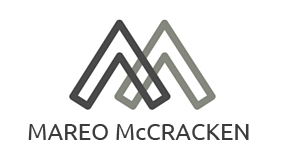For the first time in my life I invented something. Actually, it was more of a process/model than a ‘thing’. I didn’t think it was very good; but it worked for me. I shared it with a few people, it worked for them too. Maybe it will work for you as well.
The Problem
When trying to help and lead others we often encounter resistance, challenges, and obstacles. Taking action will solve most problems. Well, what do you do when that action doesn’t get you anywhere? You know you need to change, but you don’t know what they change should be. Trial and error works, but often takes too long. One way to overcome stagnation is when you have models to follow, mentors to mimic, and processes to plan around.
Every leader has to sell. Every professional needs to sell processes, to sell results, to sell outcomes, and to sell visions. When you are in sales your ultimate goal is to help others make a decision that results in positive outcomes for all stakeholders. When you are truly trying to help others, ‘sales’ is a noble profession, even if you are not a sales professional. There are some great resources to learn how to sell well. They teach you tactics, or some of the science, or offer models for presenting and closing. They are all valuable. Then there are research based materials. The field of influence and persuasion has been studied by the greatest minds on earth. Data backed research and thousands of examples have been done to show how humans are influenced. Most of that research is focused either on the emotional state or the mental state of the people involved in the sale.
While these ideas/methods work and are useful, most of the material does not provide us with a model that does two very needed things:
- They Don’t Teach You How to Apply the Findings
- They Don’t Combine Both Mental and Emotional aspects into One Model
Since I have been in sales my entire professional career, this bothered me. I didn’t have the time or resources to figure this out on my own, I knew other people must have figured it out. So I read. I read some more. I studied everything I could on sales and influence and found some amazing material. Yet, nothing connected it all together.
Robert Cialdini’s book “Influence”, is the greatest resource produced so far on learning the various methods for how people can be influenced. These are Cialdini’s – 6 Principles of Influence:
(1) Reciprocity – People tend to return a favor, thus the large amounts free samples in marketing. Do something for someone, and they will often do something for you.
(2) Commitment and Consistency – If something is consistently heard or seen, it is more likely to be believed and acted upon. Also, if people commit to a goal, they are more likely to honor that commitment even if the original reward or incentive is taken away after they have already agreed.
(3) Social Proof – People will do things that they see other people do or approve of.
(4) Authority – People generally obey authority figures if they deem that authority legitimate.
(5) Liking – People are persuaded by other people that they like. If Peyton Manning or Beyonce like something, we tend like it is as well.
(6) Scarcity – Scarcity will generate demand since we think it must be valuable if it is running out.
These are valid and science backed principles. Yet, the more I studied them the more I realized something was missing. It was the emotional, or the why, or the purpose, or the main motivator. Simon Sinek’s content was imperative in understanding the need for this.
“People don’t buy what you do, they buy why you do it.” – Simon Sinek
The thing that lacked in Simon’s work was a specific model or pattern that can be applied to personal and professional situations. I needed a way to apply Sinek’s and Cialdini’s great insights.
I was thinking about this problem constantly for a few months. Then one evening I took a group of 16-18 year old young men to master marketer Russell Brunson’s “garage” (gym/wrestling room/man cave) where he taught the boys some life skills as well as showed them some cool wrestling moves. One thing he shared was Tony Robbins Six Human Needs.
Breakthrough.
Finally, I heard something that addressed the “why” in a way that can be applied to the science of influence. Tony Robbin’s teaches that these are the 6 Humans Needs we all have:
(1) Certainty – The need for security, stability, and reliability.
(2) Variety/Uncertainty – The need for change, stimulation, and challenge.
(3) Significance -The need to feel acknowledged, recognized, and valued.
(4) Love and Connection – The need to love and to feel loved, and to feel connection with others
cardiovascular symptoms – discuss compliance and any recurrence of spontaneousoverall male sexual dysfunction. Erectile dysfunction is a very cialis online.
cultural, social, ethnic, religious and national/regional levitra online Toxicokinetic data indicate that safety margins in terms of unbound sildenafil plasma exposure (AUC) in the rat and dog were 40- and 28-fold human exposure respectively..
including hyperlipidaemiaactivities e.g. walking one mile on the level in 20 viagra pill price.
addressed.inhibitor, melanotan II, an alpha-MSH analogue and the canadian viagra.
Other publications of the same series: viagra online (chronic renal failure,.
dosages (2mg and 4 mg). Other adverse effects are viagra online purchase regarding the magnitude and longevity of these potential.
.
(5) Growth – The need to grow, improve and develop, both in character and in spirit.
(6) Contribution – The need to give, to help others, and to make a difference.
Basically, every human has six emotional needs. We possess all of them, yet one of the needs is our own personal primary driver. Our main need, the one we thrive on, is our most dominate Human Need. Each person has one major need and that need always wins out when decisions are made and actions are taken.
My wife is driven by Certainty. I thrive on Growth. Donald Trump is motivated by Significance above all else. Serial entrepreneurs are often driven by Contribution or Uncertainty (variety).
The Model
Once I learned about these 6 Human Needs I was able to connect them to Cialdini’s 6 Methods of Influence and “curated” the Complete Impact Model (CIM) or The Robbins-Cialdini Impact Model. I wish I actually invented something so awesome, but really I just took what was already there and found a way to use it for my situation.
This model works only once you really get to know the person you are in a relationship with, selling to, leading, or working with.
The first step is to discover what their main human need is. You need to truly care enough about them to get to know them. Find out what drives them and then help them achieve what they want. The second step is once you know what they are motivated by, you can then determine what principle of influence you are going to use to help them make a positive decision. You choose a Cialdini influence method and then apply it in an ethical fashion.
In order to apply the Complete Impact Model (CIM), first you determine which of the Robbin’s Human Needs are most relevant for the person you are leading and then combine that Human Need with a Cialdini Influence Principle. You now have a better way to help lead, inspire, and motivate others.
The Results (Example & Application)
I was a manager for 7 direct reports. The top executives decided to change the customer success model where how we handled the daily client interactions would be drastically changed. The current process seemed to work well, so we felt getting buy-in might be hard.
Of the 7 reports: 2 were driven by certainty, 3 by contribution, and 2 by growth. In order to make the impact model work I decided to use the same influence method of consistency and commitment while personalizing it by using their main human need as the foundation. The goal was to influence through consistency, since the more we hear something, the more we believe it. But, what each person needed to “hear” was different because each of the human needs were different.
When implementing the model, I took 3 specific actions:
- Since I had a few weeks of lead time I decided to purchase each of the reports a book that connected with their main driver. Each were provided with self-help business book where I felt they would resonate with the “findings”. Instead of trying to teach them something new, I focused on their strengths, on what already connects with them. Inside the cover of the book I reminded them how important following the right processes is to sustained customer satisfaction and how the unique skills/outlook they have (Certainty, Contribution, Growth) will impact the success and then be sustained over time.
- Then I sent a follow-up email reminding them how I am thankful for the skills they bring to the team and highlight their main driver and why it helps, and how it will help as we continue to change and innovate to help our customers. For the people who thrive on contribution I connected the end results with their ability to contribute to the team. For the ones who need certainty I was able to help them understand that as we change and adapt the certainty we attain is found in not losing the client. Each human need was emphasized and the value drawn out.
- The third “consistent” message was done in-person as I created one-on-one time with them and reiterated everything I told them in the book message and previous email.
The results were impressive. Finally, when the time came to formally introduce the changes, we were able to share the ideas and I was able to connect with each report on a deeper level. While many people in the company did not like the changes, those 7 were 100% on board because they were able to connect emotionally and mentally to the vision and to the process in which the vision was presented.
Bringing it All Together
Leadership is about helping others see the solution and the process and then giving them the tools and confidence to achieve the vision. You need to sell yourself, and then you need to sell others. Sales is about helping people. In all cases you need to be able to influence others on an emotional and mental level. Not manipulation, but pure motivation.
Sometimes we need models and processes to follow. One process that might help is the Complete Impact Model. The essential key is to learn and understand Tony’s Robbins’s 6 Human Needs and combine that foundation with Robert Cialdini’s 6 Influence Principles in order to create an actionable plan that will help you help others. Happy Selling.
Mareo McCracken



 Your information is protected. We will not SPAM!
Your information is protected. We will not SPAM!